A conversation with Irene Daum and Peter Tepe | Section: Interviews
Part II (Back to Part I)
You also collaborate with architects and are a member of the Bund der Architekten (BDA – Association of German Architects). What forms do this cooperation take?
In our first conversation I mentioned that I am a man of space. In my view sculpture already possesses an architectural quality. Take Himmelskreuz im Luthergarten (Heaven’s Cross) in Wittenberg for example. This sculpture is a vigorously spatial object that can be perfectly incorporated into its surroundings, whether in nature, in an urban context or in conjunction with architecture. The sculpture project I have just won in the Duisburg inner harbour takes a diametrically opposite approach: its formal language completely contradicts the currently prevailing architectural idiom, thereby creating a dynamic dialectic tension. These kinds of relationships were also recognised by several architects who over the last twenty-five years have invited me to join them in numerous cooperative projects.
![Thomas Schönauer/Andreas Kipar: Himmelskreuz im Luthergarten [Heaven’s Cross] (2015). Photo: Ralph Richter.](https://between-science-and-art.com/wp-content/uploads/sites/4/2018/09/schonauer_2-640x480.jpg)
Please give us further examples.
In the Water Museum Aquarius in Mülheim an der Ruhr we collaboratively developed both the load-bearing architecture as well as the interior design or scenography. In addition, there have been a number of international competitions to which I was invited to participate in conjunction with architects – such as the new metro lines in Cologne and Düsseldorf, or the revitalisation of the Pampulha Lagoon in Belo Horizonte, a project by Oscar Niemeyer.
Over time landscape architecture began to predominate in my work: the connection between designing public space and art. This is certainly one of my strong points. I get deeply involved with the nature of public space, with vacant space in relation to built structures, and on an international level this concerns a wide variety of urban contexts – with the result that I spend a lot of time travelling.
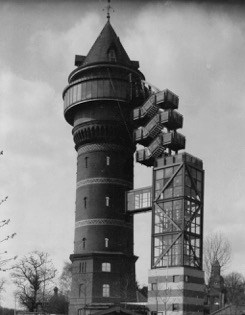
A particularly important role in your work is played by your collaboration with the landscape architect Andreas Kipar.
Very true. He approached me about eight years ago and proposed doing a project together for the International Garden Show (IGS) in Hamburg. We both share the view that before developing a plan you first need to feel the particular mood or aura of a space or location. That’s how we proceeded in Hamburg and later on in Moscow. We travelled to the sites and immersed ourselves intuitively in their respective atmospheres. In Moscow this was how we won the international competition to transform the former central military airbase into a city park.
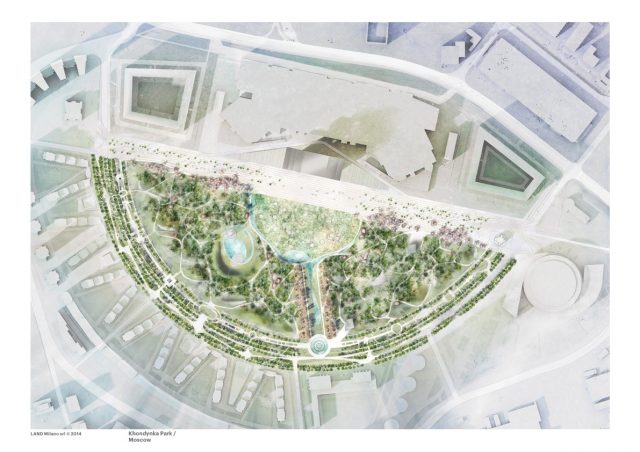
Let’s discuss more closely how your work relates to science.
Several years ago I was invited to participate in a competition to develop a large-scale sculpture in conjunction with a nano research facility in Singapore. So I began studying the smallest particle, the atom. I then set about sticking things like Christmas baubles together. Realising this approach worked quite well, I then enlarged it to the right scale. I went on to create a whole series of Atompop sculptures which in terms of hyperstatic design were complex constructions. I was concerned above all with the question whether through sculpture you could approximate the atomic structure of the world.
Is your intention here to visualise scientific findings or is it more about conveying the significance of such findings?
A bit of both really. I’ll give you an example. The Atomium in Brussels is based on the real structure of atoms. By contrast, switching over into art I imagine a different kind of Atomium capable of generating its own cosmos. In this the physical model would serve simply as an initial stimulus.
So you are undertaking a certain measure of abstraction.
Exactly. By dousing it with paint I then achieve an even greater degree of abstraction, as well as estrangement in relation to the subject of gravity. If you take a close look at it you’ll see the colour runs from the bottom to the top. If you like, I have turned gravity on its head. The artist is entirely free in what he does, he has to be. This is of course a visualisation of my own personal idea of the atomic model, a purely artistic one.
Insofar as you work as a science-related artist one might encapsulate your method as follows: after getting first acquainted with a project, you revise a certain basic knowledge (for instance relating to atomic structure and gravity), then you enter the process of artistic adaptation which takes you back into your personal universe, your worldview and your way of working. The acquired body of knowledge serves as a point of departure for your free creative work. Or you might say, revising the state of your scientific knowledge provides a launch pad for a flight of free artistic development. Not all science-related artists are willing to immerse themselves so deeply in the relevant basic scientific principles. In many cases it is little more than a superficial encounter.
You could say that. But I’ll add another important aspect: my artistic treatment of scientific findings has something to do with humour.
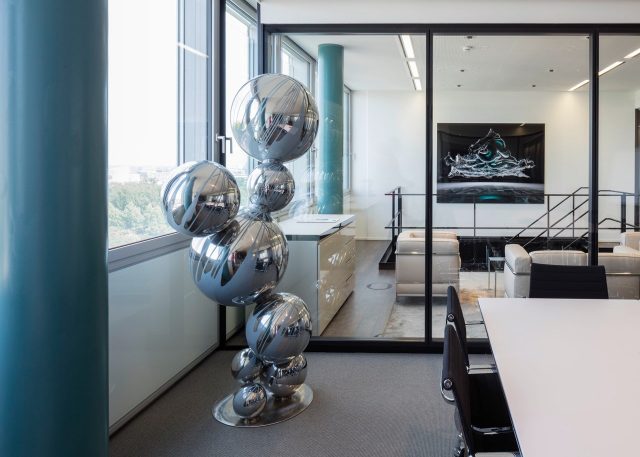
That needs clarifying.
As an artist, on a meta-level you have to be able to let go of the scientific models, otherwise things can drift into pastiche, for instance. In such cases you have to accept that rather than working scientifically you prefer to poke fun at science.
Can you give us a concrete example?
I was once invited to submit a design for a large traffic roundabout. I definitely didn’t want to do conventional roundabout art. So I developed a sculpture that flies down from the sky because I consider the inner zone of a roundabout a non-existent space, a non-space. One can’t walk onto the interior of a roundabout, so likewise I can’t actually put a sculpture inside it, it has to fly into it by itself. This of course has a humorous angle, which is also evident in the sculpture. The object does not rise upwards from the bottom but from the top down. Its movement is dunked down, as it were, and then there the sculpture stands. This was how the group of sculptures Skyfall came about.
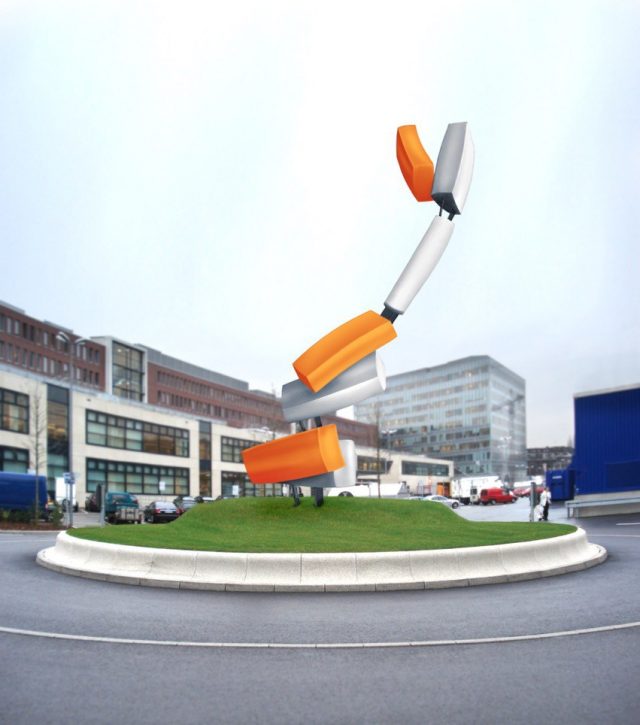
So to summarise your approach, what you call humour is also always a counterpoint to the simple application of scientific findings by an artist. It speaks of a basic artistic outlook in how you embrace the scientific source material you are working with, always seeking to steer it in the opposite direction and give it a playful form. In this, you set no boundaries. In the phase of artistic development everything is permitted.
I am not a scientist – that would be a presumptuous claim. I treat science as a source of stimulation for my imagination.
Your words concur well with what we were discussing previously. I’d like to return to your cooperation with chemists. As yet we have touched on just a few aspects of this subject. You are one of very few artists who seek to collaborate with technicians and industrial companies to garner new possibilities for your own artistic work.
Happy circumstances brought me into contact with leading researchers at Henkel, and they helped me, step by step, to further develop industrial adhesives for the innovative methods of my paintings.
What role do adhesives play for you?
It’s the fate of all adhesives that they aren’t seen. There are adhesives everywhere in between things. In industrial applications adhesives have become increasingly important but in our perception they don’t exist. I am interested in bringing this material to the surface, in giving it a life of its own, to invest it with aesthetic character.
How did you persuade the company to get involved? Only very few people succeed in making contacts like this and setting the machinery of science and technology in motion for their purposes. This brings up the issue we here at w/k call cooperation between science/technology/industry and art. This is where things are initiated that a science-related artist could never generate on their own.
As I mentioned before, the star of fortune shone down on me. At some point the chairperson of the board at Henkel, Frau Bagel-Trah, saw my paintings in an exhibition and as a scientist with a trained eye she spotted that my painting was not based on traditional techniques. And since she also appreciated artistic quality she inquired into the painting process involved. The fact that my painting is based on industrial adhesive systems fired Frau Bagel-Trah’s curiosity and eagerness so long as it took before the doors to laboratories and the hearts of research scientists were finally opened up to me, allowing me to speed up my research into painting techniques in collaboration with experts, a wonderful opportunity. Henkel’s involvement also led to a commitment: hanging in the head office of the adhesive division today is an extensive sculptural and painting installation of mine, Flying Cubes. Which in my view is a compelling example of an artistic application and aesthetic treatment of an industrial material and of cooperation between art and industry.

A critique of linear thinking
As already emerged in Part I, you call for an end to linear thinking and for a switch to disruptive and complex thinking. Behind this there seems to be an entire theory we would like to hear more about. What do you mean by “linear thinking”?
I’ll start by giving you an example. Linear thinking and action were embodied in Herr Winterkorn’s stipulation that before the year X twelve million cars had to be sold worldwide in order to make VW the number-one car producer in the world. The fact that the share of diesel-fuelled cars being manufactured was constantly rising but at the same time capping their emission values was not technically or legally possible at the envisaged cost did nothing to moderate company targets – even criminal energy was factored into this linear strategy.
As we are not familiar with the concept of “linear thinking” we would like to clarify this. Should we take a “linear corporate strategy” to mean a strategy that one-sidedly and to some extent dogmatically seeks to maximise profit and sales? Even criminal activities are taken on board if they help – or seemingly help – to achieve the main objective (which is not up for debate). So linear thinking can be equated with dogmatic thinking that stakes everything on a single approach and disregards anything that doesn’t fit or has objectively changed due to external factors.
Yes, that’s how it’s meant. The principle of linear thinking is a critical concept. In most cases, if you adopt a corresponding critical viewpoint linear thinking and action are quick to recognise and see through.
If we’ve properly understood you, linear thinking is usually also a form of hierarchical thinking. Could you cite an example to explain this?
Numerous engineers at Volkswagen will have realised the absurdity of the goals set by the company chairman to generate the stated return targets but the company’s hierarchical structure allows no room for doubt. In other words, against better knowledge everyone has bowed to the hierarchical structures of thinking and action.
If you pair this insight with our conceptual definition it seems one could formulate the following theory: the hierarchical structures prevailing in companies, bureaucracies and various other institutions have a tendency to amplify linear and dogmatic thinking that stakes everything on a single approach.
Absolutely. So a critique of linear thinking also needs to involve criticising the hierarchies that promote this thinking.
That brings us to the final point in our discussion. When you call for a shift from linear to disruptive and complex thinking you clearly have a quite specific other kind of thinking in mind. Could you please give us another example to illustrate this “better” thinking?
The question facing us today is, are we, without a struggle, willing to relinquish the future development of society to demagogues, populists and power-hungry autocrats all over the world because large sections of the generally lesser educated strata are driven, among other things, by fear of being overwhelmed by the rapidly changing world to voluntarily sign up to the ostensibly simple solutions offered by these people that are built on chauvinism, nationalism, racism and, more broadly, on isolation and exclusion? The response to this surely can only be to shed light on the complexity of our circumstances through thoroughgoing and interconnected inquiry and analysis, and to offer a broad and differentiated range of solutions. It needs to be made clear that linear thinking and action with their oversimplified models of question/answer, either/or and stimulus/response are the key causes for the current negative trends in our social and economic lives.
Thank you for this illuminating conversation.
Photo above the text: Thomas Schönauer: Die Fünf [The Five] (2016). Height: 555 cm, coated stainless steel. Photo: Stefan Lindauer.
How to cite this article
Irene Daum (2018): Thomas Schönauer: Science – Technology – Critique of Linear Thinking. w/k–Between Science & Art Journal. https://doi.org/10.55597/e3178
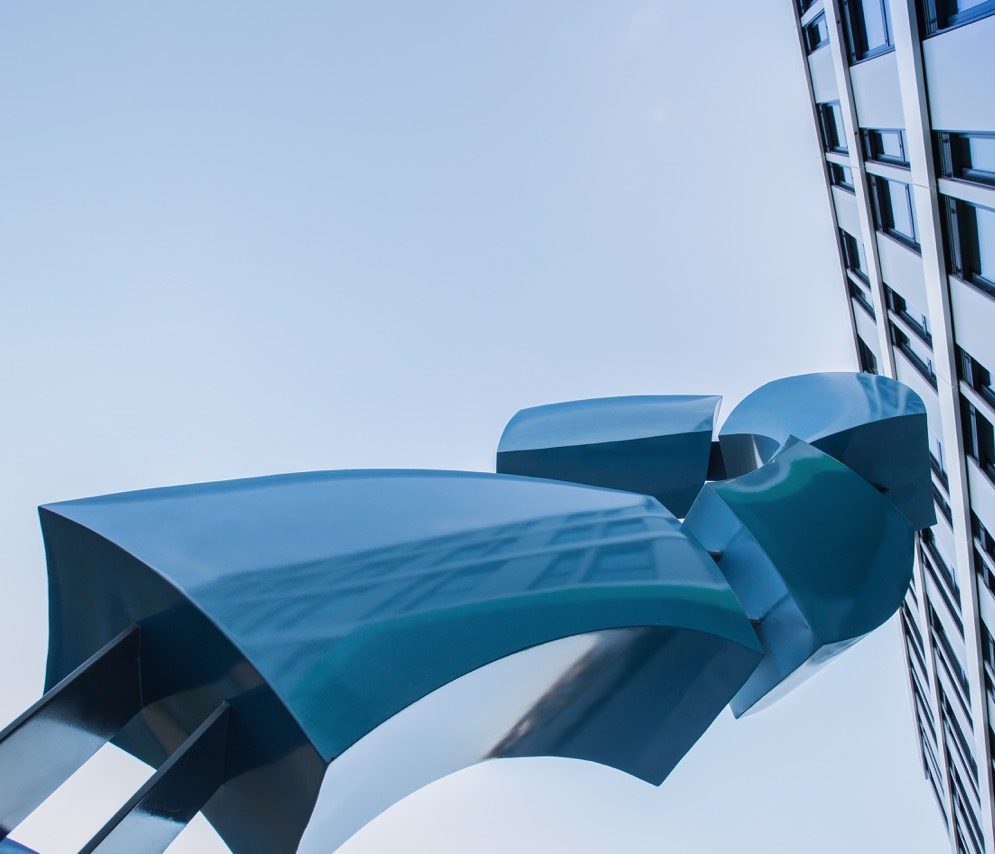

Wonderfull article! Utmost inspiring!!!!